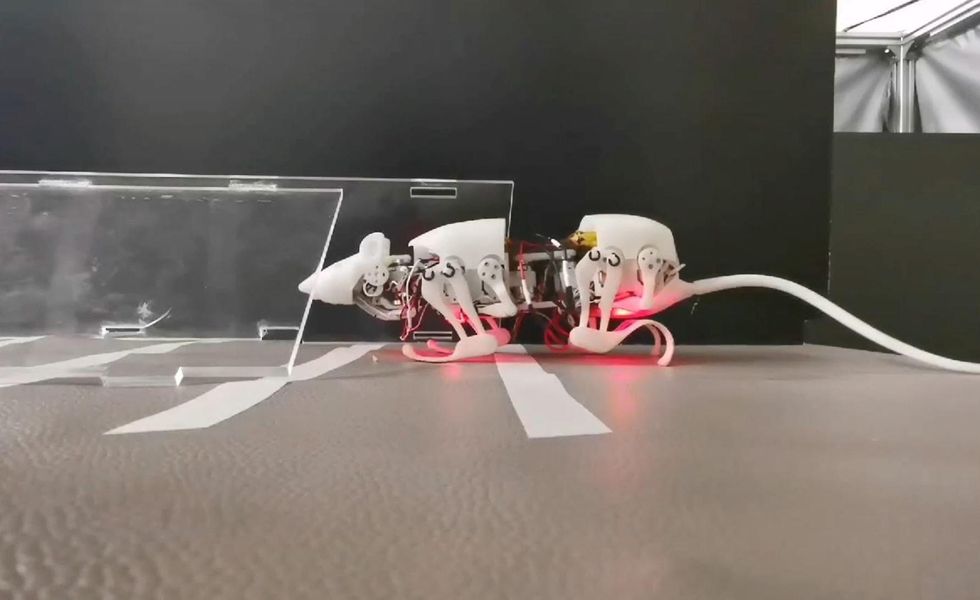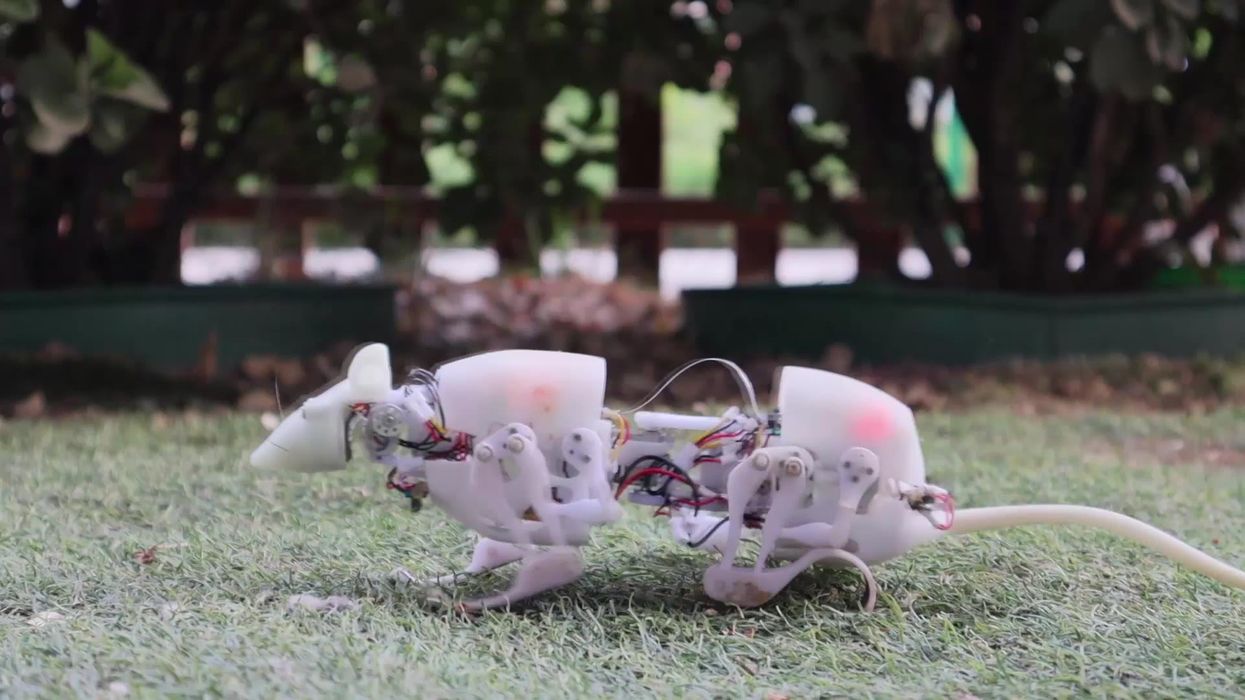Sinead Butler
Apr 24, 2022
Robot rats invented to search for survivors at disaster sites
SWNS
Disaster sites may soon benefit from the technology of robot rats that are being developed to search for survivors in disaster scenarios.
The small-sized quadruped robotic rat, named SQuRo, has been developed by a team of researchers led by Prof. Qing Shi at the Beijing Institute of Technology in China.
Because rats have small, slim bodies they are able to fit through narrow spaces which makes the perfect shape to base the robot on. The purpose of the rats is to find survivors in disaster sites that humans may not be able to reach.
The robot rats will make their way through rugged terrain and perform tasks such as detection or transportation in relevant scenarios.
Footage of SQuRo in action shows how the robot fits into small tunnels by crouching, turning around in a confined space, and picking itself back up again if gets kicked or knocked down.
Sign up for our free Indy100 weekly newsletter
This month, a study was published in the journal IEEE Transactions on Robotics, where the team broke down how they replicated particular properties of a rat's biological system.
A wheeled robotic rate was developed with rat-like behaviours and then adapted to improve agility by replacing the wheels with legs.

Although experimental results from the study show that the legged robot SQuRo is able to mimic the motion of actual rats inside narrow spaces, it also says this element is "still challenging."
“Legged robots are very promising for use in real-world applications, but their operation in narrow spaces is still challenging. One solution for enhancing their environmental adaptability is to design a small-sized biomimetic robot capable of performing multiple motions," the study reads.
"By capturing a decent representation of an actual rat, we developed a small-sized quadruped robotic rat (SQuRo) which includes four limbs and one flexible spine.
"The results obtained through a series of experimental tests reveal that SQuRo achieves a superior motion performance compared with existing state-of-the-art small-sized quadruped robots."
"Remarkably, SQuRo has an extremely small turning radius (0.48 BL) and strong payload capacity (200g), and it can recover from falls."
Have your say in our news democracy. Click the upvote icon at the top of the page to help raise this article through the indy100 rankings.
Additional SWNS reporting by Dean Murray.
Top 100
The Conversation (0)














